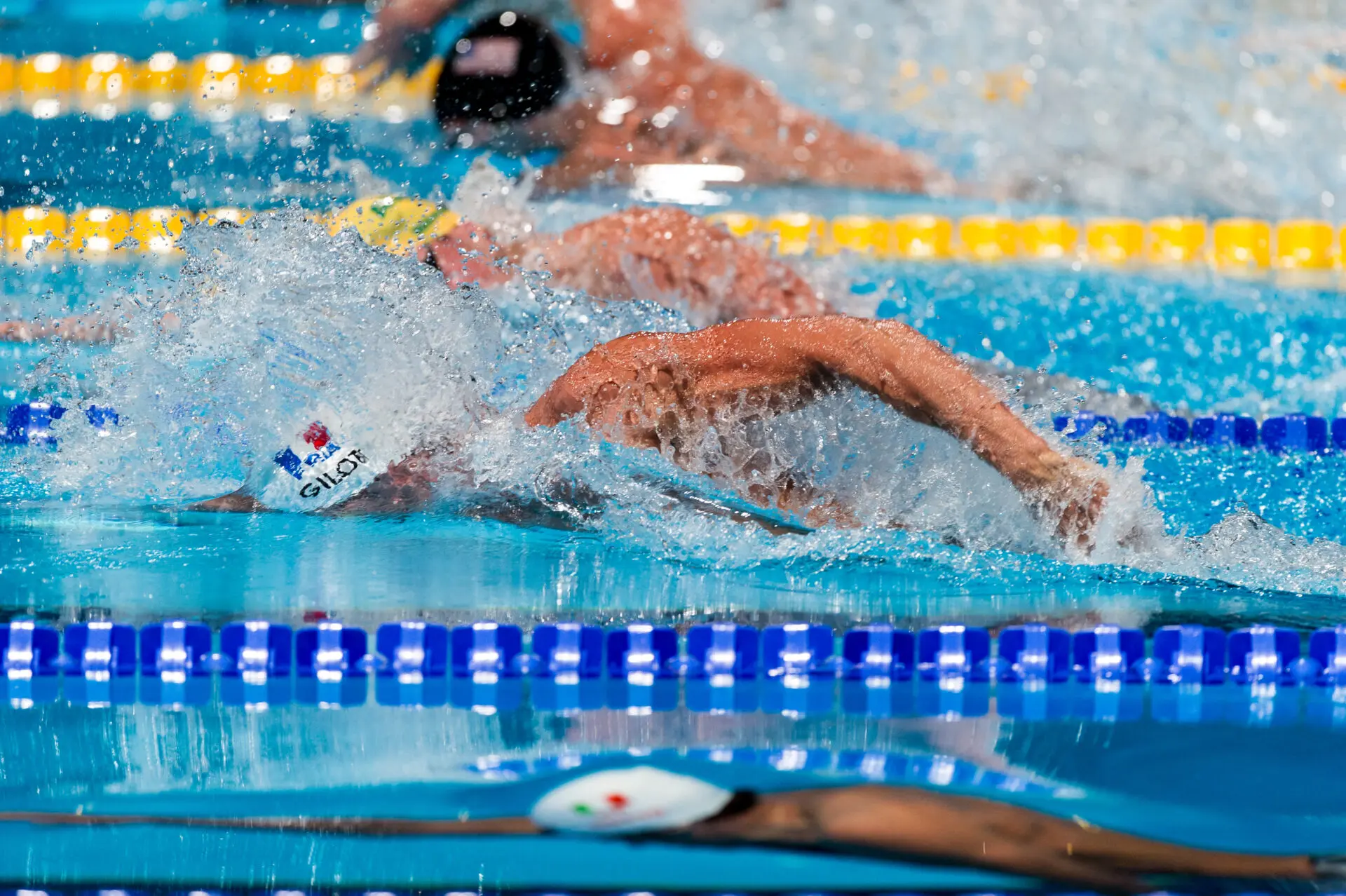The Olympic pool is the ultimate model in competitive swimming pools. Whether for local, regional, national or international competitions, swimmers dive into these pools to train and compete in their 50-metre length.
However, when designing and building an Olympic swimming pool, a number of rules and regulations must be complied with to ensure the proper functioning of the facility, as well as the optimal performance of its users and athletes.
Olympic swimming pools must follow specific guidelines regarding dimensions, tolerances, design, water treatment and accessories.
Swimming is one of the most remarkable disciplines at an Olympic Games. It has been held since Athens 1896.
Nowadays, it has millions of fans all over the world and athletes from all countries, with an impressive preparation, who also demonstrate their skills in other disciplines such as artistic swimming, open water swimming, diving or water polo.
Dive deeper with the eBook
What is an Olympic pool?
An Olympic swimming pool is one that is designed to hold competitions such as those held at the Olympic Games or at other world, continental or local sporting events.

Measurements of an Olympic size swimming pool
The specifications of an Olympic swimming pool are set by the World Aquatics federation (former International Swimming Federation FINA).
This institution establishes all the measures that a pool must have for any of the disciplines that take place in the water and taking into account the nature of the event, in this case a world event. These rules are set out in the World Aquatics Competition Regulations (former FINA Facilities Rules).
Metres
According to the International Swimming Federation an Olympic pool will always be 50 metres. However, there is a tolerance in these dimensions in the case of using automatic touch panels of the refereeing equipment, which are located at the starting end or at the turning end.
In such cases, Olympic pools can vary from +0.010 to -0.000 metres. In other words, a pool of this type with tactile panels can have a distance between its walls of a minimum of 50.020 metres and a maximum of 50.030 metres.
It should be noted that each athlete must have lane space in order to compete. In an Olympic pool there must be room for 8 lanes and each lane must have 2.5 metres of space across the width of the pool.
In addition, there must also be 2 additional lanes at the ends (next to lanes 1 and 8) with the same dimensions or at least a space of 0.2 metres outside the last lanes on each side of the pool.
Depth
With regard to the depth that an Olympic swimming pool must have, the regulations establish that for swimming, the minimum depth must be 1.35 metres from the first metre to 6 metres from the end wall.
The rest of the pool, on the other hand, can have a depth of 1 metre, but cannot be less.
In some cases, water polo competitions are also held in Olympic-sized pools, where the playing field is marked out with a cork to establish the official size for such competitions. In these cases, the pool must have a minimum depth of 1.80 metres, although 2 metres is recommended. In this way the swimmers are not in contact with the bottom of the pool and remain afloat at all times.
Litres or cubic metres
The capacity of an Olympic pool will depend directly on the dimensions used in its construction, in terms of metres and depth.
In general, an Olympic-size swimming pool should have 2,500,000 litres of water, although its capacity is greater. It can hold up to 4 million litres of water.
In any case, the water temperature should always be between 25ºC and 28ºC. In order to maintain the water level, preserve its transparency and take into account the sanitary regulations in force in most countries, the inflow and outflow of water from 50-metre pools must be regulated between 220 and 250 m3/h. In addition, World Aquatics limits the salinity of the water to less than 3g/l of salt for pools that want to record world records and junior world records.
In the case of water polo competitions, the water should be kept at a temperature of 26°C (+-1°C).
At Fluidra we are a company with extensive experience in international competition pool projects, working in accordance with the corresponding official regulations for Olympic competitions.
